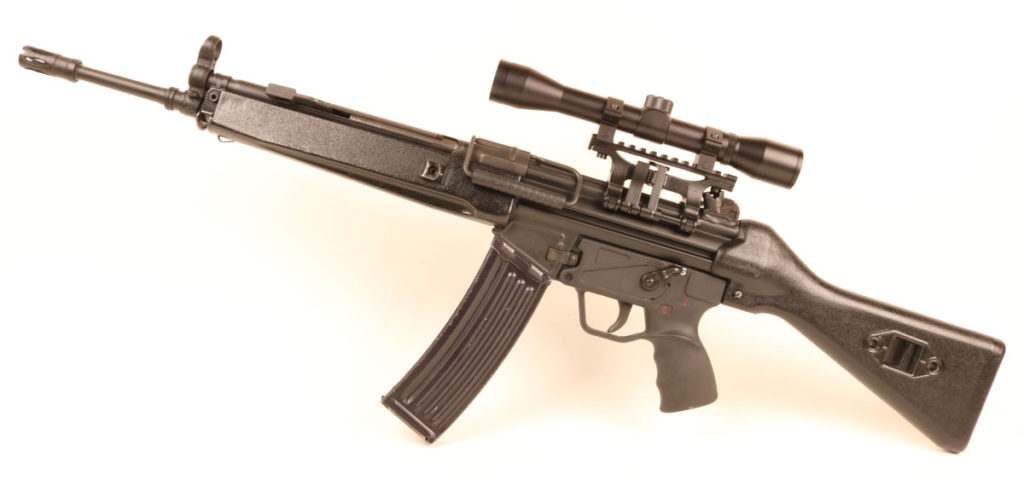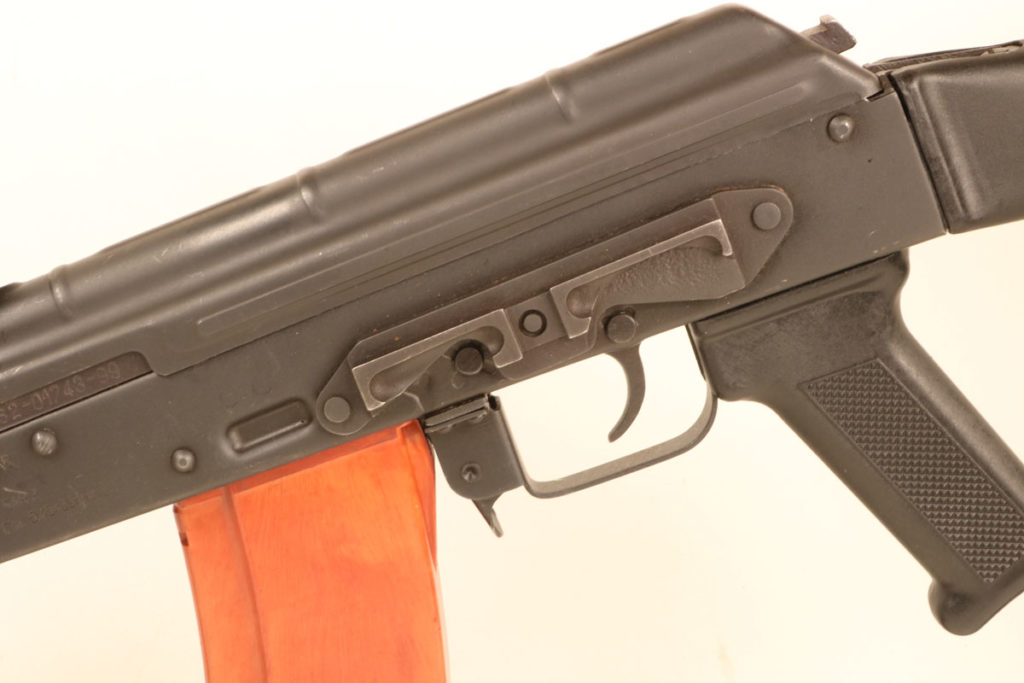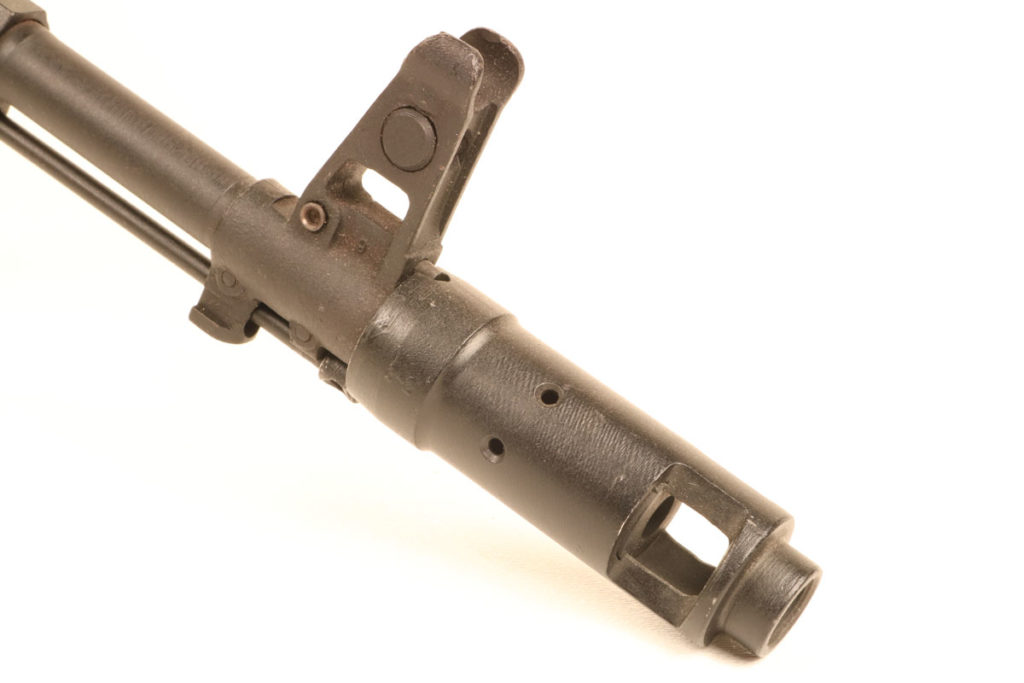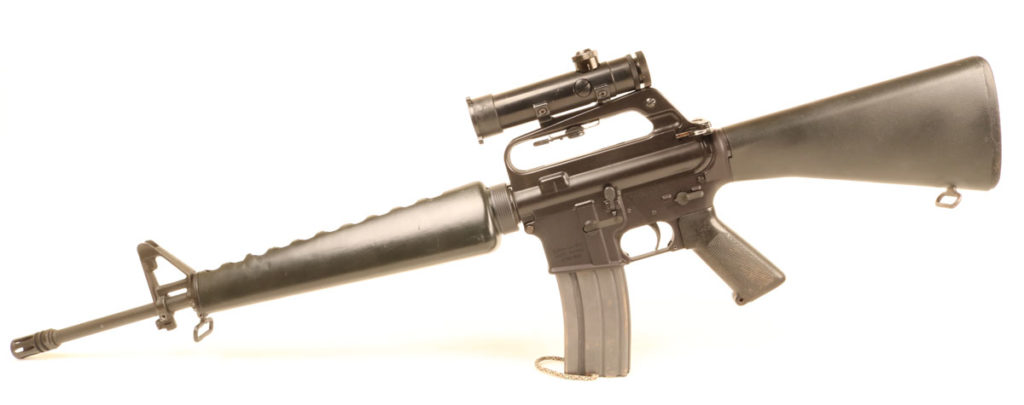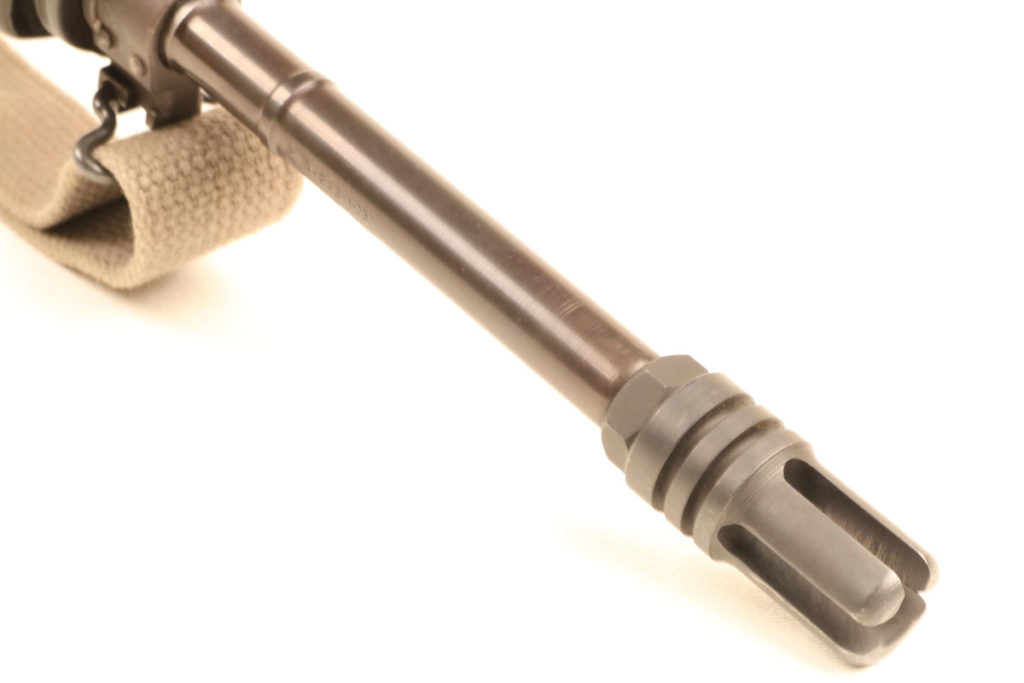Everything starts someplace. All dogs no matter their size, shape, or comportment owe their parentage to a common feral precursor. Thomas Malory birthed the English novel in 1485 with Le Morte d’Arthur. Every personal computer on the planet stems from that first Altair 8800 sold through the mail in kit form in 1975. Some Hip-Hop lunatic first ignited the current ridiculous dance craze that is dabbing in Atlanta some time within the past decade (Look at my name. Yes, I get asked about it all the time.) Similarly, most all the world’s modern combat rifles arose from but four precursors. There are certainly others, but these have had staying power.
Mechanical systems like small arms evolve in response to myriad forces both industrial and martial. Somebody has an idea that seems to work, and that idea is tweaked, adjusted, and improved over time until it becomes something better, more reliable, and more efficient. The astute student of modern small arms, however, can generally tease out the origins of a mechanism with a little study.
HK: The Teutonic Titan
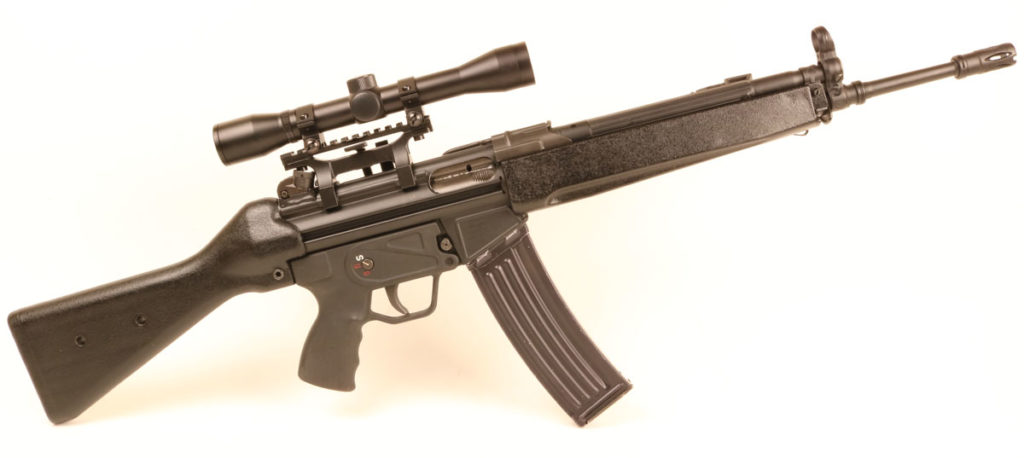
The HK33 is the 5.56mm version of the 7.62mm G3. Heavy by modern standards yet imminently rugged, the HK33 is fairly typical of the family of roller-locked assault rifles.
The roller-locked action of the HK33 is the least prevalent system we will discuss this day. Spawned from the prototype STG45 that arose from the ashes of the Second World War, this roller-locked recoil-driven action defined a generation of HK rifles and submachine guns. The concept arose from the MG42 belt-fed machinegun.
The MG42 has been extolled as the best machinegun of World War 2. Comprised of pressed steel components that kept it cheap and sporting a blistering rate of fire, the MG42 was indeed a formidable combat tool. The beating heart of the MG42 was its novel roller-locked recoil-driven action.
Dr. Werner Gruner was the chief engineer behind the MG42, and he had never before built a gun. His company produced pressed-steel lanterns prior to his winning the design competition to replace the previous MG34. It was likely his subsequent lack of preconceptions that spawned such an innovative mechanism.
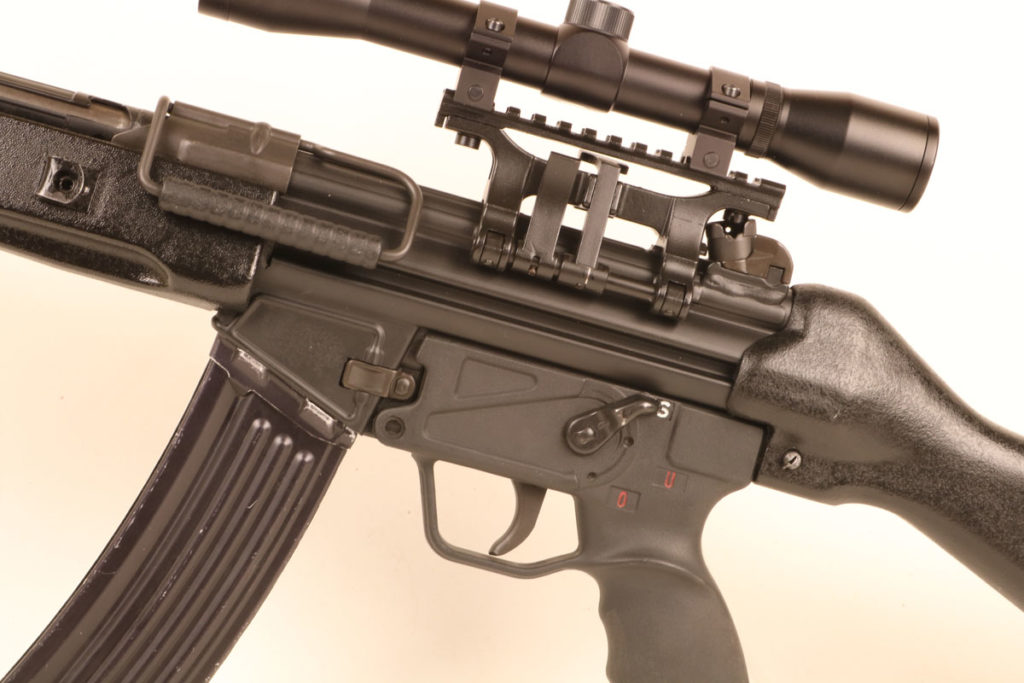
Roller-locked HK rifles and submachine guns all sport pressed steel receivers that can be economically produced in large quantities.
The basic action consists of a pair of roller bearings that cam into recesses in the breech end of the gun’s barrel. These bearings retard the movement of the bolt long enough to allow chamber pressures to drop to a safe level. As this system operates independent of gas pressure, the resulting weapon does not depend upon barrel length for reliable operation.
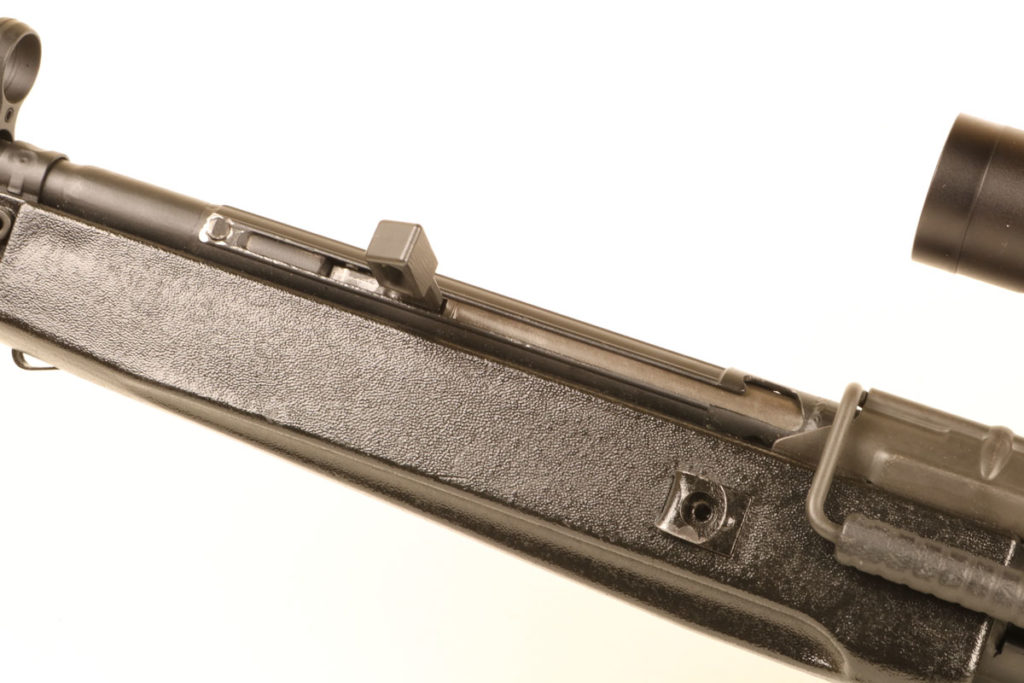
The bolt on the HK33 does not lock to the rear after the last round is fired, and this is a pain. However, you do get some cool points for slapping the charging handle down over a fresh magazine.
The STG45 was an experimental 7.92x33mm rifle developed by Mauser for the Wehrmacht at the very end of the war. This design was taken to Spain where it became the post-war CETME battle rifle. German engineers subsequently brought the concept back to Germany where it drove the G3, HK33, and MP5-families of guns.
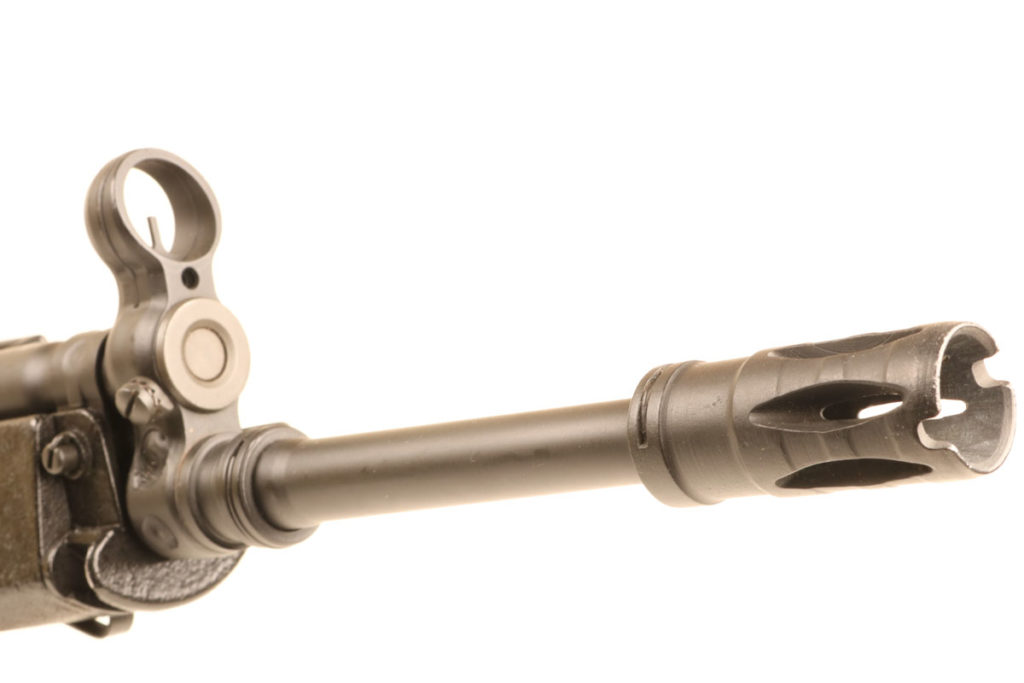
HK flash suppressors sport a groove in the end that serves as a wire cutter. Center the offending wire in the groove, lean against it to bring the wire taught, and fire a round to cut it cleanly. This simple device works on concertina and commo wire as well as the standard barbed sort.
These weapons are dichotomous designs in that they orbit around inexpensive pressed steel receivers yet incorporate precision machined components in their bolts and recoil mechanisms. While G3’s are still commonly found in your more poorly funded war zones, by and large, the roller-locked design has been supplanted by simpler stuff these days. Roller-locked guns still remain in production in several countries, however.

Though the roller-locked action is a bit dated this deep into the Information Age, the HK33 remains an effective combat weapon.
Comrade Kalashnikov’s Meat Grinder
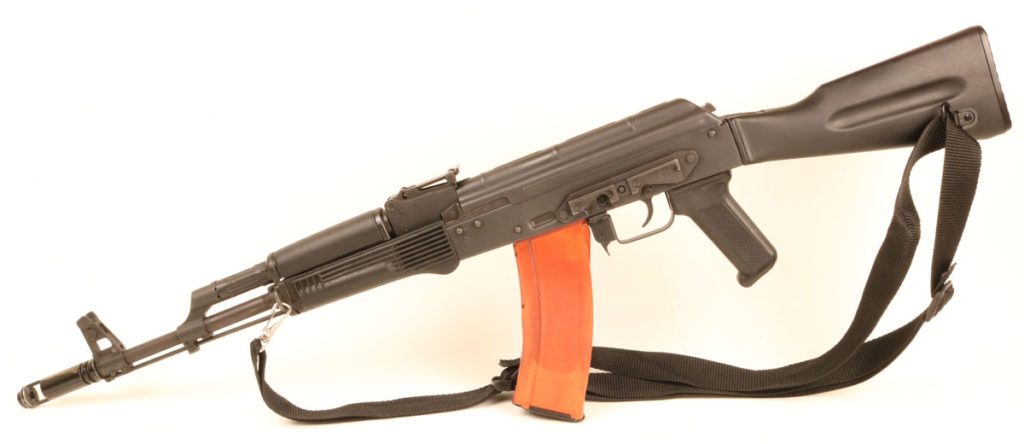
The AK74 was an evolutionary advancement of the original post-WW2 Kalashnikov combat rifle. Firing a radical small caliber 5.45x39mm round, the AK74 still serves as the standard-issue Infantry weapon for Russian forces.
As the story goes Mikhail Timofeyevich Kalashnikov dreamt up the AK47 action while recuperating from wounds he received fighting the Germans as a T34 tank crewman at the Battle of Bryansk during World War 2. The tale has all the obligate components of an epic Communist political tome. Kalashnikov was a peasant, the 17th of 19 children, and he purportedly designed the gun amidst a veritable fit of patriotic fervor. He purportedly wished his eponymous assault rifle to stand in the vanguard defending Mother Russia against the resplendent ills of fascism.
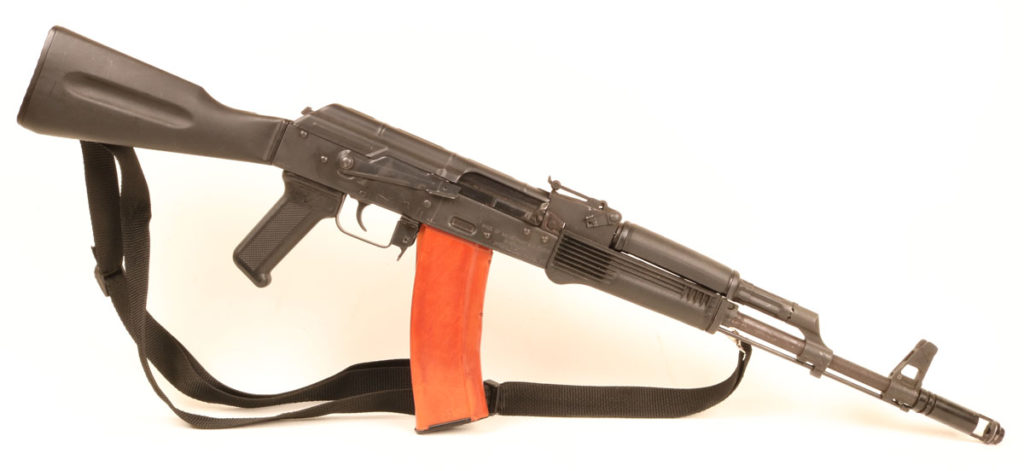
The ranch gate safety selector on the AK74 has been justifiably maligned. Hard to reach and tough to manipulate quietly, it is nonetheless effective.
The reality was that the Kalashnikov clan suffered mightily during Stalin’s bloody purges, and there were likely other influences that bore on the gun besides the informal etchings of a recovering Soviet tanker. Regardless, the basic AK action has been universally extolled as the most popular military weapon in human history. More than 100 million copies have rolled off the lines in the last seventy-five years, and the world produces another million of these rugged guns annually.
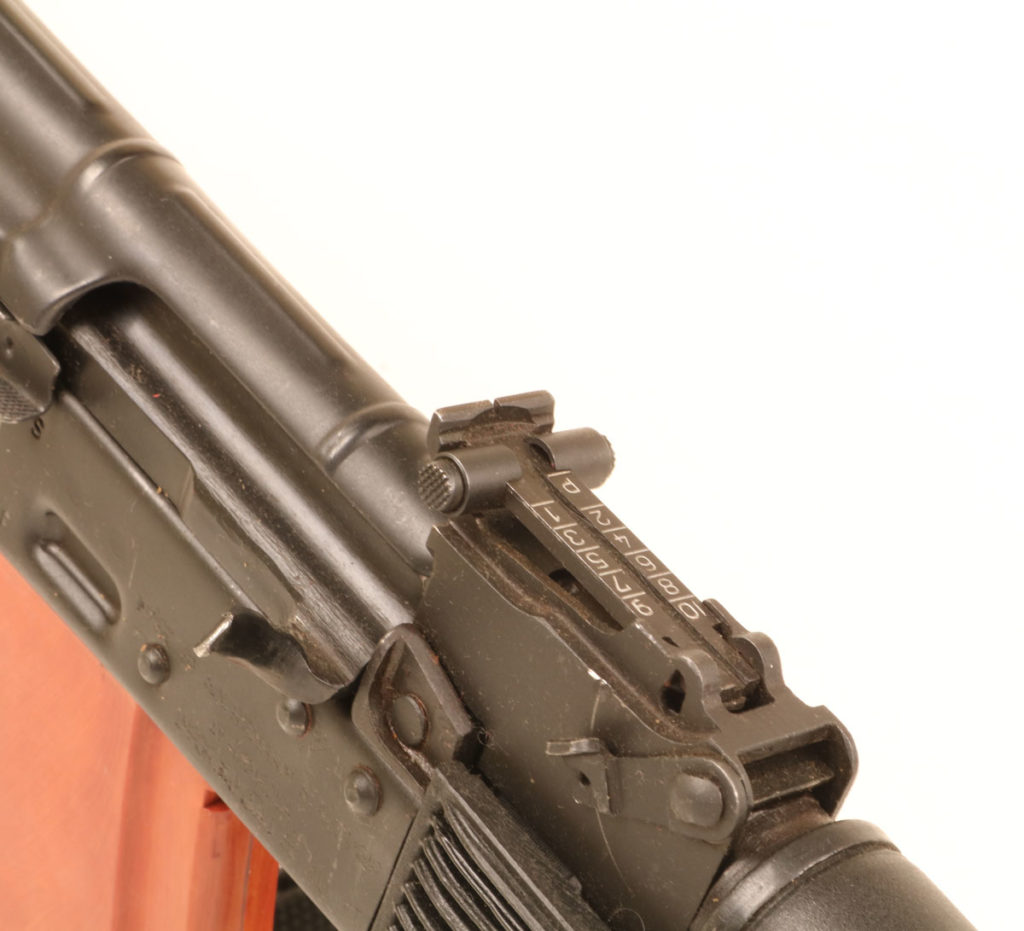
The ramp adjustable rear sight on the AK74 is fairly dated. Some but not all AK74 rifles have their charging handles canted up for easier access.
AKs are ubiquitous fixtures across the planet, and the price of a Kalashnikov rifle is a reliable indicator of how nice a place is to live. If full auto AKs are expensive and tough to find then settle down, buy a home, and join the local Rotary. If you can trade into one for a live chicken and a dog-eared copy of Hustler magazine then you should leave. The Kalashnikov is so simple a child can use it and many have.
In many ways, the AK rifle reflects the ethos of its designer. Rugged, over-designed, and simple, the Kalashnikov rifle is the small arms equivalent of the basic Russian peasant. The gun has a singular mission that it performs with monotonous reliability. It is not elegant, refined, or pretty, but it is inimitably functional.
The long-stroke gas piston system that drives the AK involves a lot of reciprocating mass. The overbuilt bolt carrier assembly has energy to burn and will always be the last to fail anyplace two or more assault rifles are competing for mechanical supremacy. The resulting weapon is not the most accurate in the arms room, but it will reliably go bang every time you squeeze the trigger.
Those first AK47’s fired the short but heavy 7.62x39mm M43 round originally designed for the RPD light machinegun. As the name implies, the AK74 was developed in 1974 and fed a radical 5.45x39mm cartridge with an unnaturally long 53-grain bullet. This variant first saw action in Afghanistan in 1979. The American CIA purportedly paid $5000 cash for the first captured example to find its way outside that wretched country. The long slender 5.45x39mm round has always been a personal favorite. This basic chassis went on to become the AK100-series guns in production today.
Gene Stoner—The Godfather of Guns
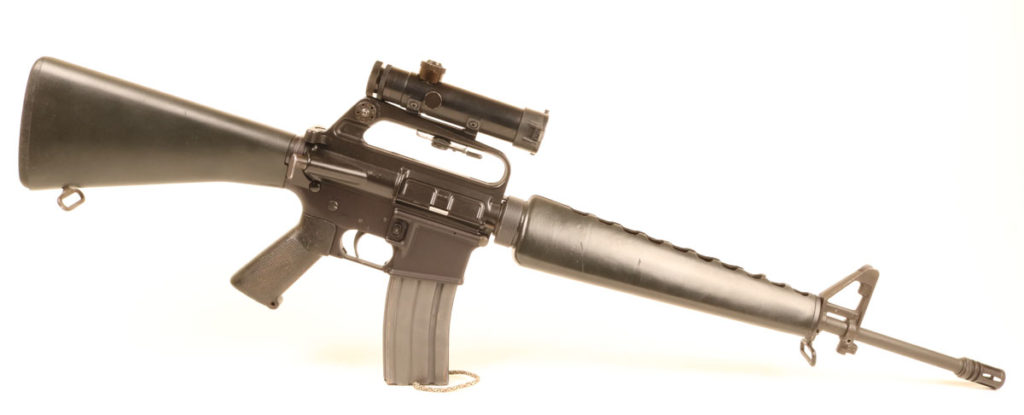
The M16A1 was the definitive variant of the AR15 used during the Vietnam War. Lightweight and maneuverable, the M16’s teething troubles have been well documented.
In 1956 a former Marine named Gene Stoner and a few others strived to incorporate aviation technology into the burgeoning world of modern small arms. The radical new AR10 rifle they designed orbited around aircraft aluminum receivers and a novel but simple direct gas impingement operating system. The action drew inspiration from a little-known turn-of-the-century French rifle called the Rossignol B1.
The concept began with the AR10, a 7.62x51mm battle rifle submitted for the US Army’s rifle trials held in 1956. While the AR10 ultimately lost out to the T44 that went on to become the M14, the design was subsequently miniaturized to accept the .223 Remington cartridge. The .223 Remington was itself also a Gene Stoner creation that pushed a 55-grain .22-caliber bullet to around 3,000 feet per second. While this tiny little round represented a quantum leap in military small arms technology, the circuitous route it followed was labyrinthine.
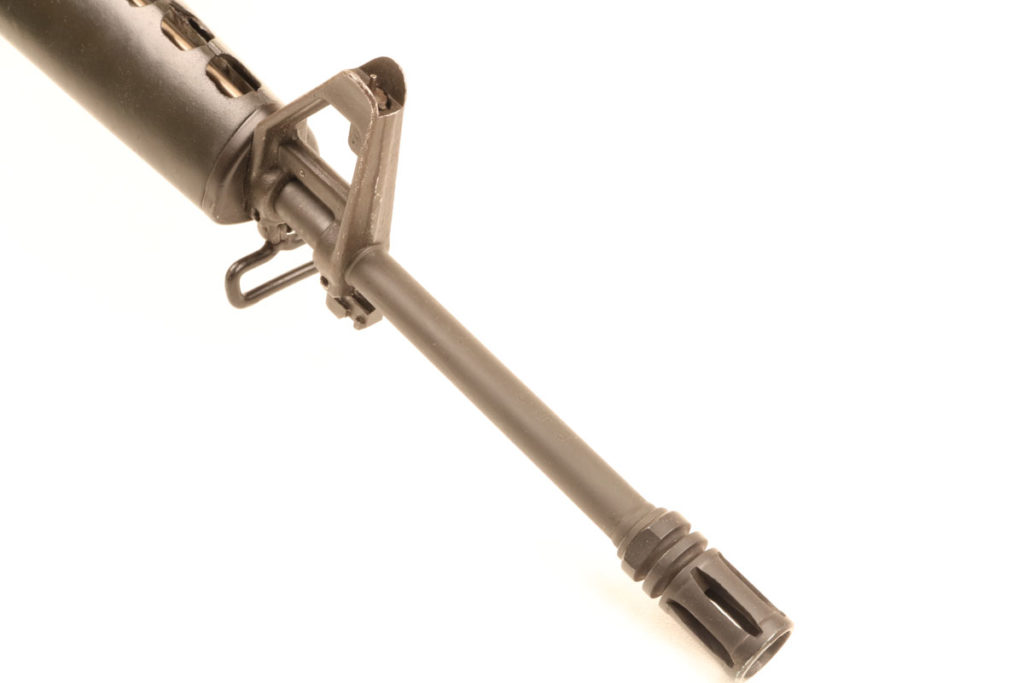
The direct gas impingement system of the M16 keeps the forend of the rifle uncluttered. The closed birdcage flash suppressor replaced the earlier open sort as the previous version caught badly on brush and vines.
The AR10 became the small-caliber AR15 that was ultimately championed by Air Force General Curtis LeMay, the commander of strategic bombing forces in the Pacific during World War 2. With LeMay’s patronage, the AR15 morphed into the M16 and was adopted by the US Air Force in the early 1960’s and subsequently by Army Special Forces soldiers in Vietnam. The gun was then foisted upon combat troops throughout this combat theater, and its teething problems became patently manifest. The bugs were eventually worked out, and the M16 became the longest-serving military rifle in American history. Our boys and girls serving downrange carry Information Age versions of this rifle even today. The details are much more convoluted, but this captures the gist of the tale.
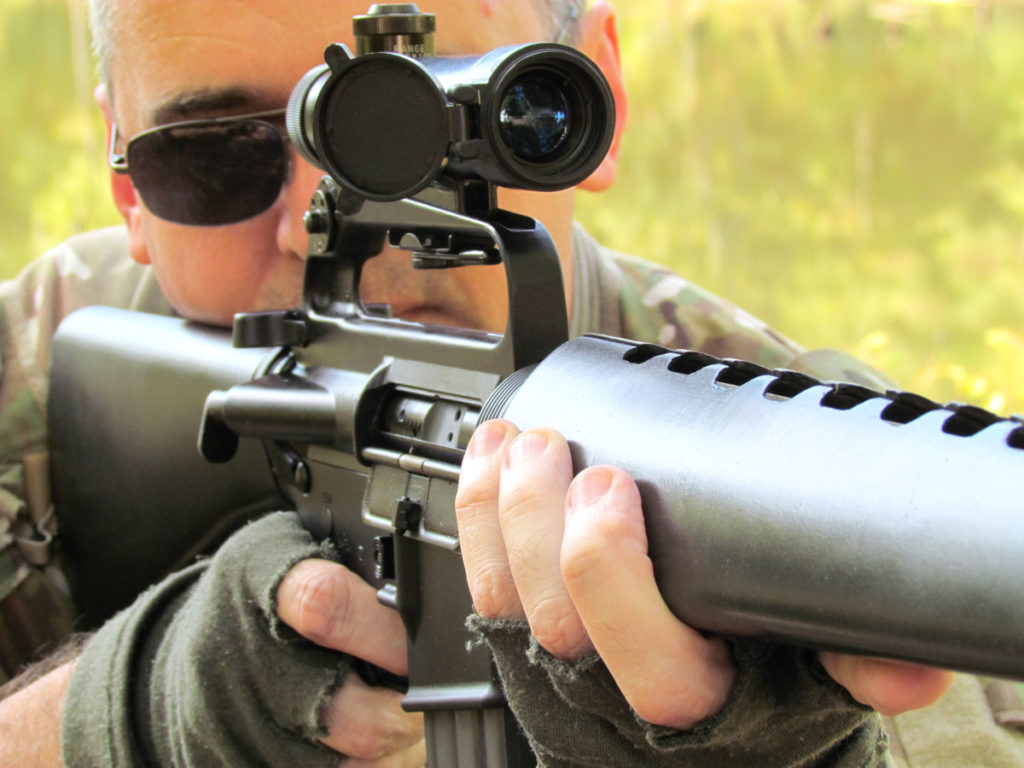
The original M16A1 was a remarkably lithe combat weapon before we started hanging so much crap on it.
The M16/M4 family of rifles is indeed lightweight and controllable. Typically feeding from a thirty-round detachable box magazine, the M4 is accurate and effective out to about half a kilometer. The direct gas impingement system demands regular maintenance for reliable operation, but it will no doubt be serving with American forces downrange for the foreseeable future.
Gene’s Ambitious Upstart
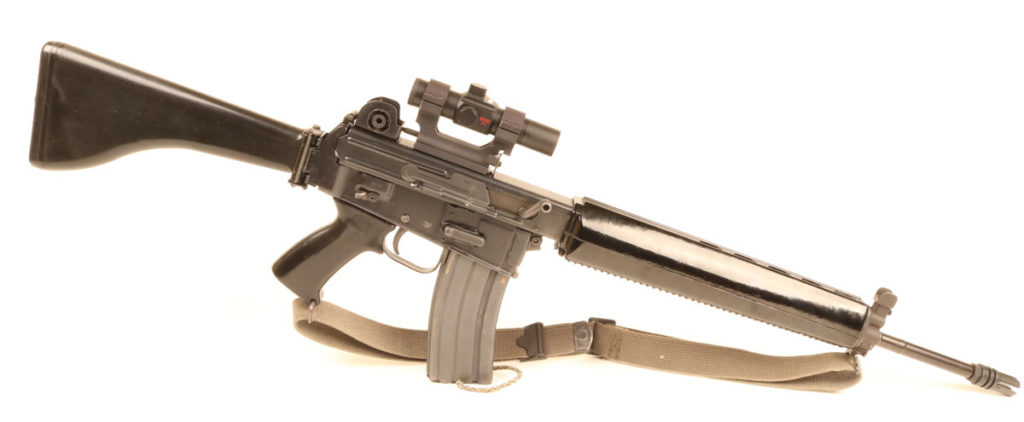
The AR18 was the next generation evolutionary development of the M16. Easier to produce and running a cleaner, cooler, more reliable gas piston action, the AR18 spawned several other advanced combat rifles currently in common use.
In 1963 Gene Stoner and Arthur Miller began work on the next generation replacement for the AR15. Rights to that rifle had passed on, and it was time to work up a follow-on weapon that was simpler to manufacture. While the basic AR rifle was indeed revolutionary, it required advanced industrial capabilities to produce. Their subsequent 7.62x51mm AR16 morphed into the 5.56mm AR18 after Stoner left the project and went into production in 1969.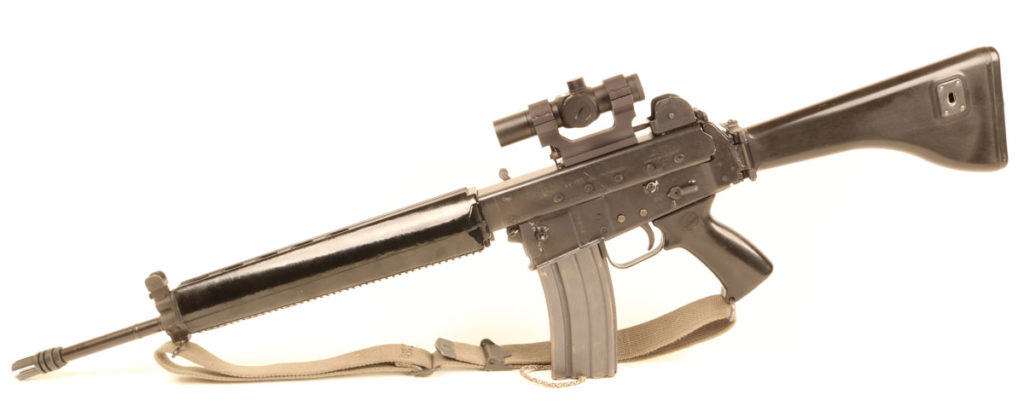
The AR18 was a more conventional design than the esteemed Space Age black rifle that preceded it. Gone were the forged aluminum receivers in favor of stamped steel components more akin to those of the HK93 or AK74. Semi-skilled workers could stamp out these parts en masse on industrial presses. The direct gas impingement system was exchanged for a more conventional gas piston design as well.
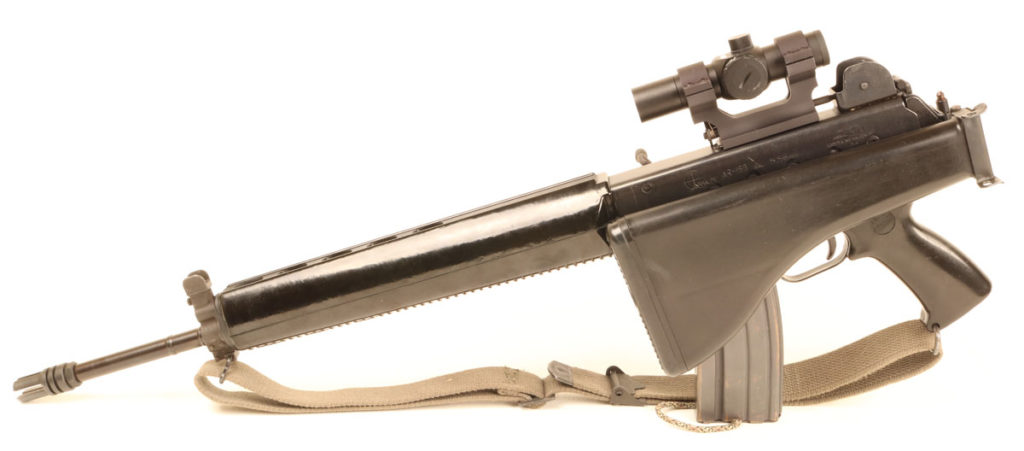
The AR18 has its recoil spring in the forearm with the gas piston, so the buttstock is free to pivot to the side.
The production run of the AR18 spanned from 1969 until 1985. These rifles were produced in the US, the UK, and Japan and saw very limited combat action, mostly in Lebanon and Northern Ireland. Though the AR18 didn’t itself make much of a splash, the guns that it inspired went on to dominate the marketplace.
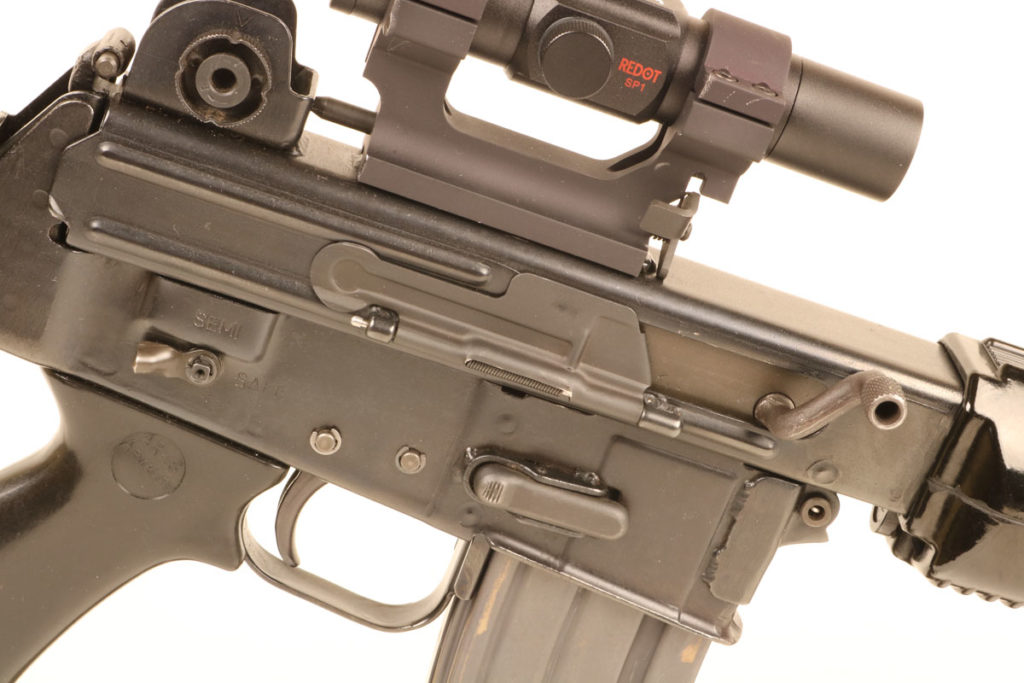
The AR18 is designed around an upper and lower receiver constructed of pressed steel stampings. It is an easier weapon to produce than the M16 as a result.
The basic AR18 action was adapted to the Steyr AUG, the HK416, and the G36 as well as several lesser designs. These rifles currently serve in various guises in the hands of the military and LE operators around the globe. The AUG has seen widespread service with the Australian military. The HK416 arms America’s Tier 1 special operators, while the M27 Infantry Automatic Rifle is a full-length variant of the HK416 that serves with distinction with US Marine Corps riflemen today. The G36 has been the standard issue service rifle in the German Bundeswehr since 1997.
The AR18 sports a rigid charging handle that reciprocates with the bolt. The recoil spring on the gun is incorporated into the gas system so the buttstock is free to fold to the side. The gas piston action of the AR18 runs much cleaner and cooler than does that of the AR15.

The in-line design of the AR18 very effectively negates muzzle rise as can be seen by this long string of fire.
Trigger Time
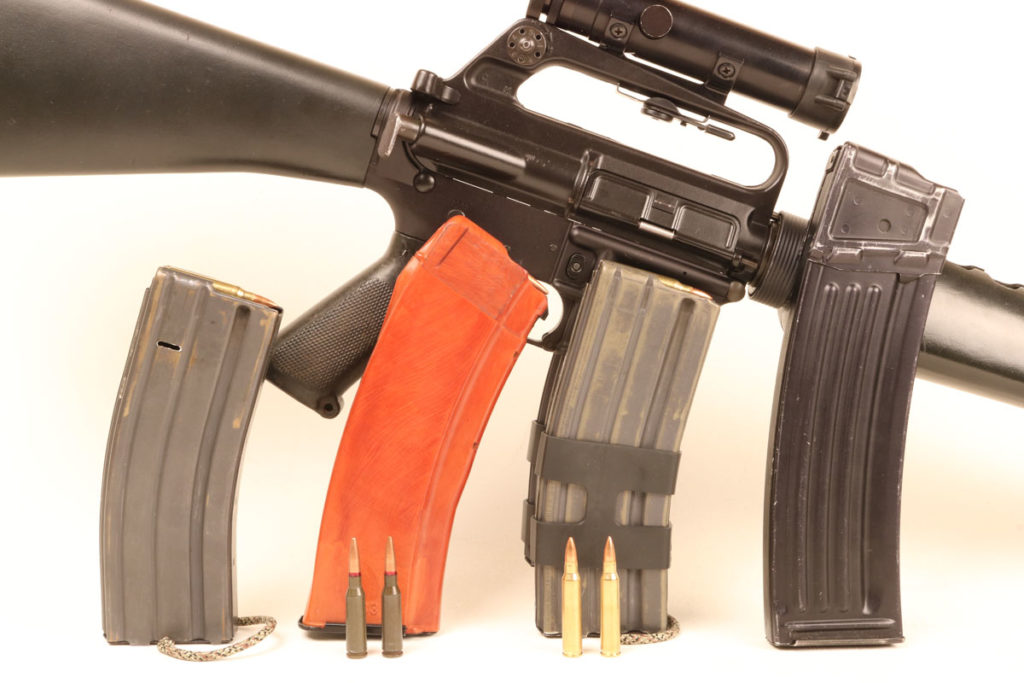
Magazines for these four weapons are optimized for their respective actions. From left to right are the AR18, the AK74, the M16, and the HK33. The AR18 mag differs from that of the M16 solely by the small slot cut in the side for the magazine catch.
The HK93 is a heavy and rugged design. The manual of arms is a bit more cumbersome than is that of our other contenders, but you win some cool points during magazine changes. The bolt does not lock back on the last round fired, so one must manually lock the bolt to the rear, replace the magazine, and then slap the charging handle to drop the bolt. Recoil is pleasant given the gun’s mass, and the fire controls are easily accessible by right-handed firers.
The AK74 is not designed for real humans, but it runs well enough regardless. The right-sided ranch gate safety has been justifiably maligned, and the magazines must be rocked into position. However, this does allow for easy seating of a full magazine with the bolt closed. The bolt does not lock back after the last round is fired, and the sights were state of the art back in 1945.
The ergonomics of the AR15 set the standard by which all others are judged. Everything is readily accessible, and magazine changes are fast and easy. The T-shaped charging handle is perhaps suboptimal, but, so long as everything goes well, you shouldn’t have to fart with it once the bullets start flying. No other gun in the world is so modular or adaptable as the current iteration of the M4.
The AR18 is a superb lightweight fighting rifle. The charging handle sports a handy crook, so it is fairly easy to access with the left hand if you cant the rifle just a bit. The weapon shoots fine with the stock folded, but no sensible shooter would ever run it thus. The gun is almost as light as an AR15 and much more easily maintained.
Each of the rifles we reviewed for this project has been supplanted by something newer, fancier, and better. However, the designs they each subsequently spawned soldier on in the hands of both Good Guys and Bad across the globe today. Within these four basic rifles we see the seeds that ultimately grew to become most of the world’s modern small arms.
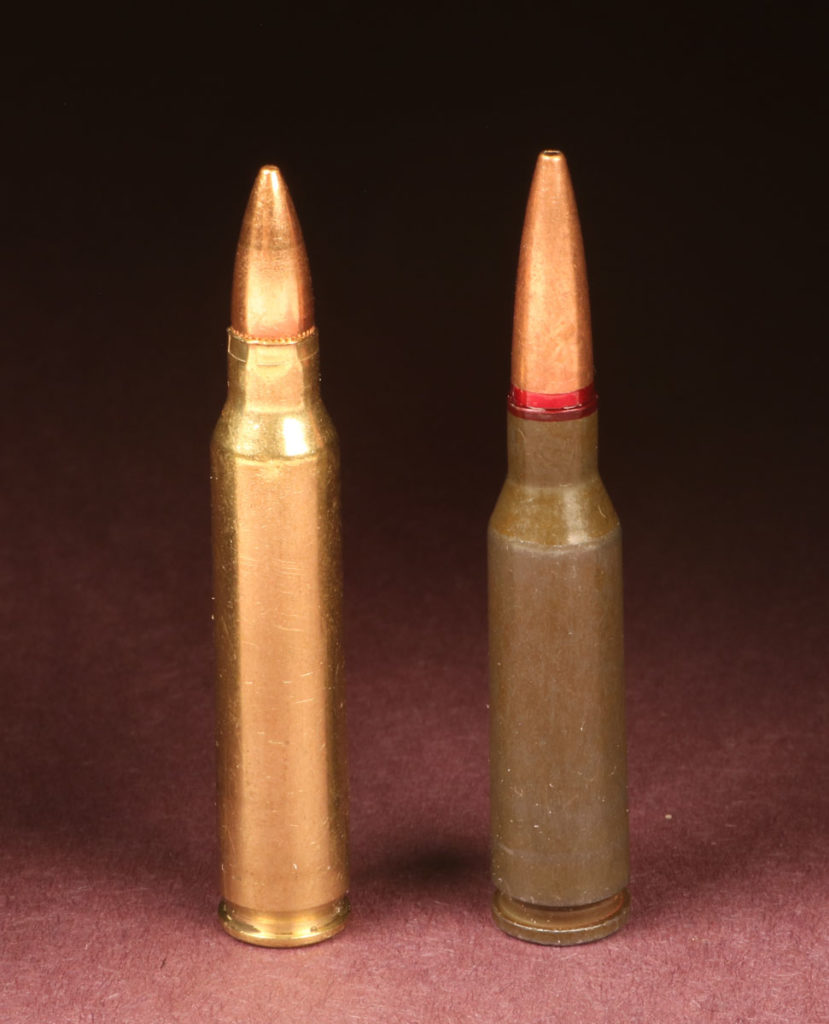
The 5.56x45mm round on the left was a Gene Stoner creation and drives most of the Free World’s small arms. The 5.45x39mm round on the right pushes a long thin bullet that is remarkably effective downrange.
Technical Specifications
HK93 AK74 M16A1 AR18
Caliber 5.56×45 5.45×39 5.56×45 5.56×45
Weight 8.05lb 6.8lb 6.37lb 6.7lb
Length 36.2 in 37.1 in 39.5 in 38 in
Barrel Length 15.4 in 16.3 in 20 in 18.25 in
Rate of Fire 750rpm 650rpm 750rpm 750rpm
Mag Capacity 25/30/40 30/45 20/30 20/30/40
